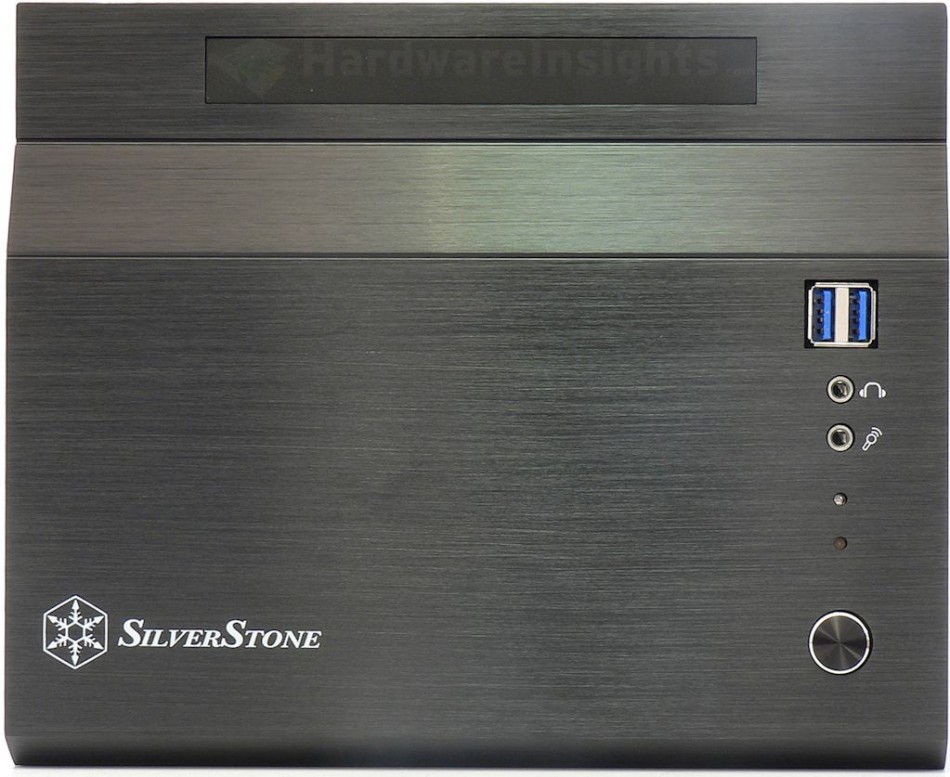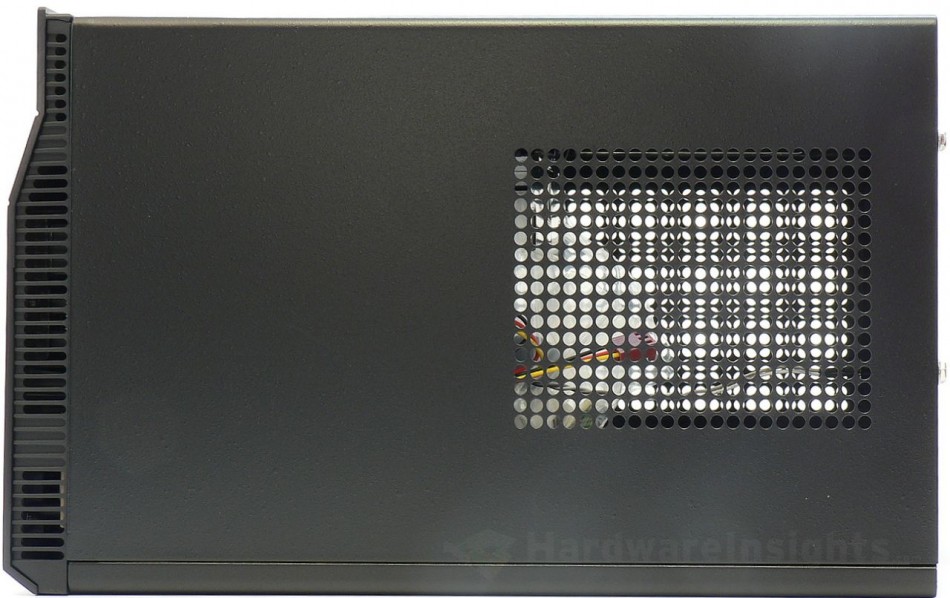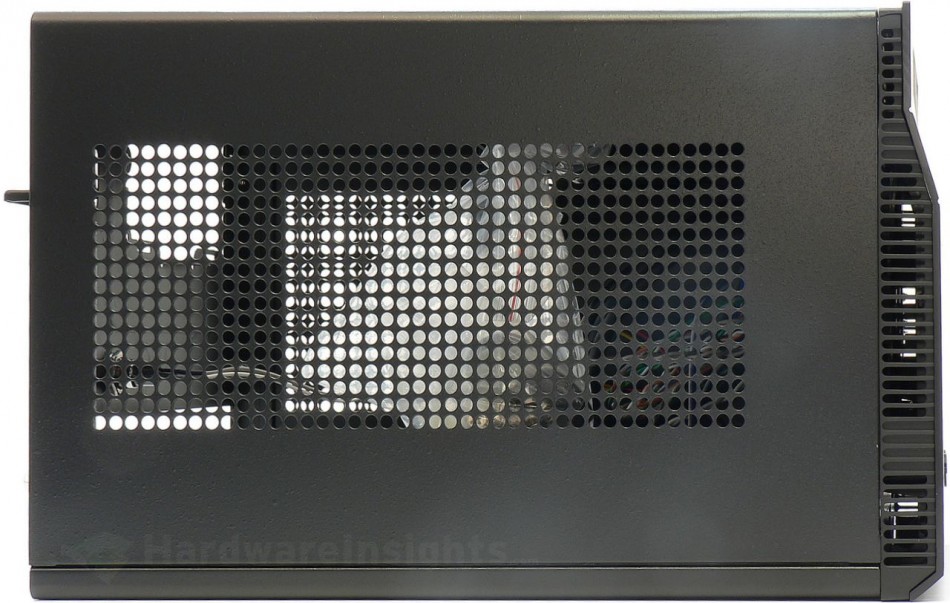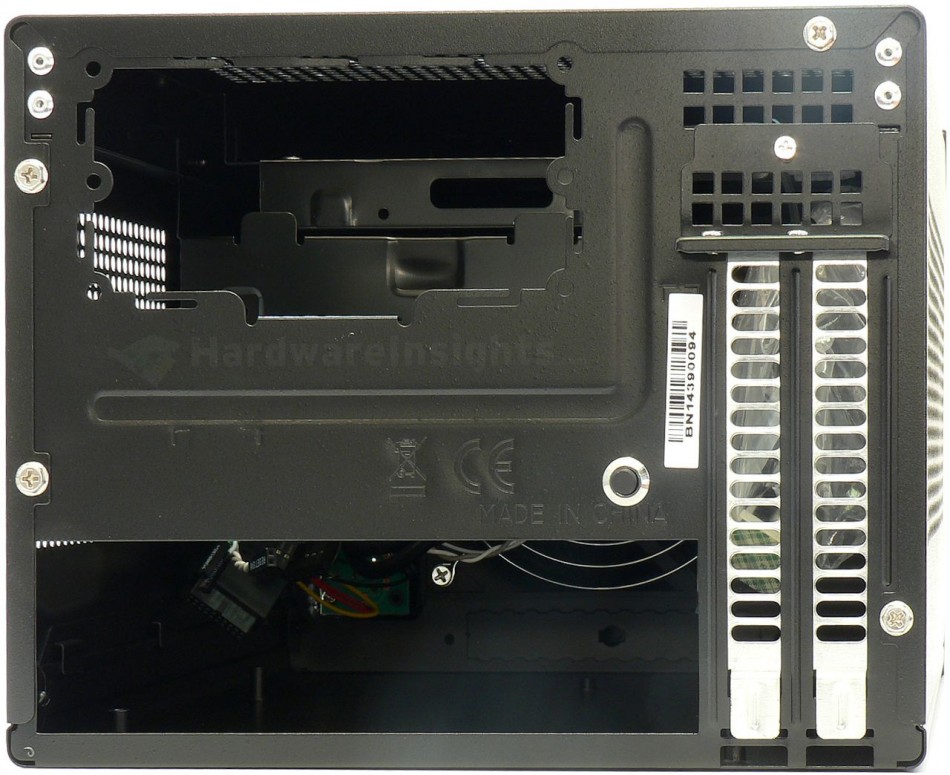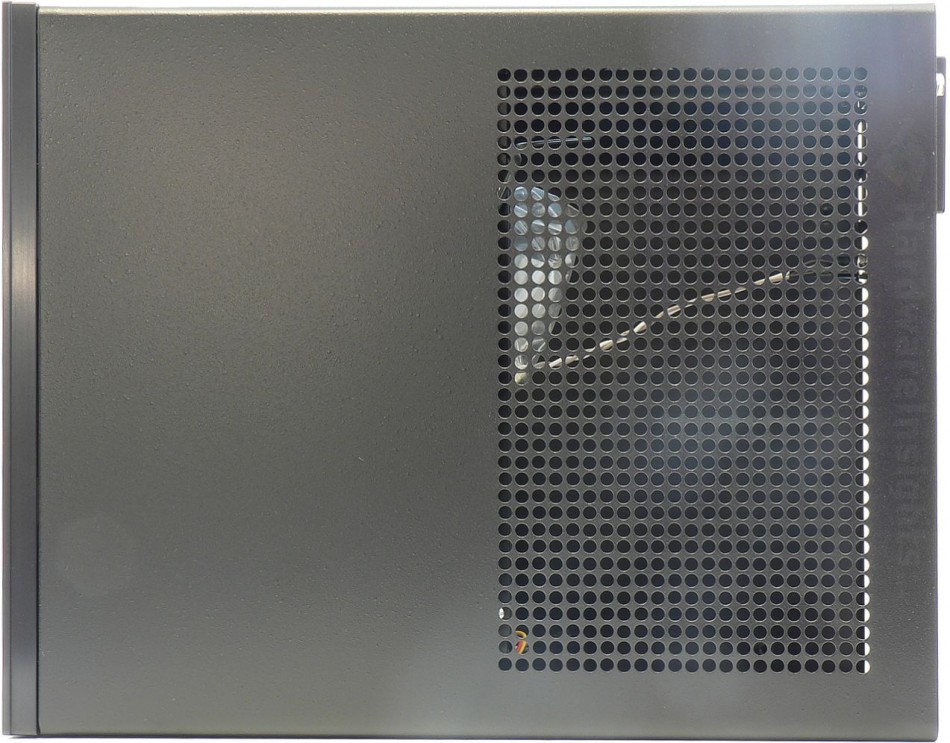Contents
Externals
Lets start from the front. The front panel consists of a plastic frame, most of which is extended outward by the sides, with many small air intake slots. On the right side of the front panel we can see two USB3 ports, two 3.5mm jacks, two LEDs and the power button. The reset button is actually located at the rear of the case, which is highly uncommon. The actual material for the front panel itself is brushed aluminum, which is screwed into the plastic frame.
Clearly visible are the perforations on the sides of this panel frame (this is the left-side view). Also visible are the perforations in the metal side panel, and this time they’re being used for an air exhaust, as there really is no other useful space for this purpose on the back of the SG06.
The right side is very similar, but the perforations on the metal side panel are far more numerous, extending almost all the way to the back of the case. Here is where the physically long and powerful graphics card would sit, for those of you who have one. The case is clearly designed for videocards with reference cooling designs, which draw in air from the side, and then exhaust it through the back of the case.
Though different types of videocard cooling solutions could theoretically be used, as there are some perforations on the back, I personally wouldn’t go too crazy on the videocard, because the cooling capabilities are severely limited in this regard. Even if the card could cool itself down, it would make a lot of noise because the fan would be working overtime. And for that matter, I’m not exactly sure why Silverstone provides perforated slot covers. If you aren’t installing a card, then they’re not serving any purpose (especially when you’re trying to do something about the cooling, e. g. by installing some extra fans). And if you do, you’ll be removing them anyhow.
You’ll notice that the upper and side panels are actually composed of a single piece of bent metal, which then forms a kind of “lid” for the entire case. As it is bent, the upper edges are nicely rounded. But this on the other hand does not match too well with sharp-edged front panel. This awkward transition from the panel to the rest of the case is slightly more noticeable on the upper part. The top of the case has perforations covering almost half of the entire area.
The cooling system clearly isn’t the optimal, but with such limited possibilities, and considering the given layout, there’s really not much more that could have been done. Though if the component selection allows for it, it may be possible to perhaps direct the airflow in a more controlled manner. For example, by employing additional slim, low-RPM fans at the sides or on top. Because only relying on the CPU heatsink to move all that air may not be the most effective solution. Unfortunately, Silverstone didn’t consider this, so no mounting positions are provided, and the perforation holes that are there for intake or exhaust are too small for ordinary fan screws. That means you’d have to use smaller screws and nuts. The sides should be able to accommodate up to 92mm fans.
